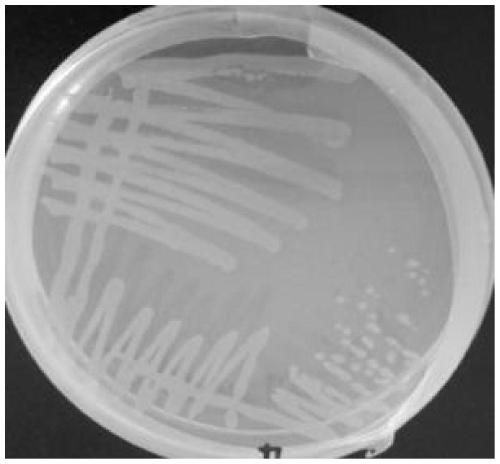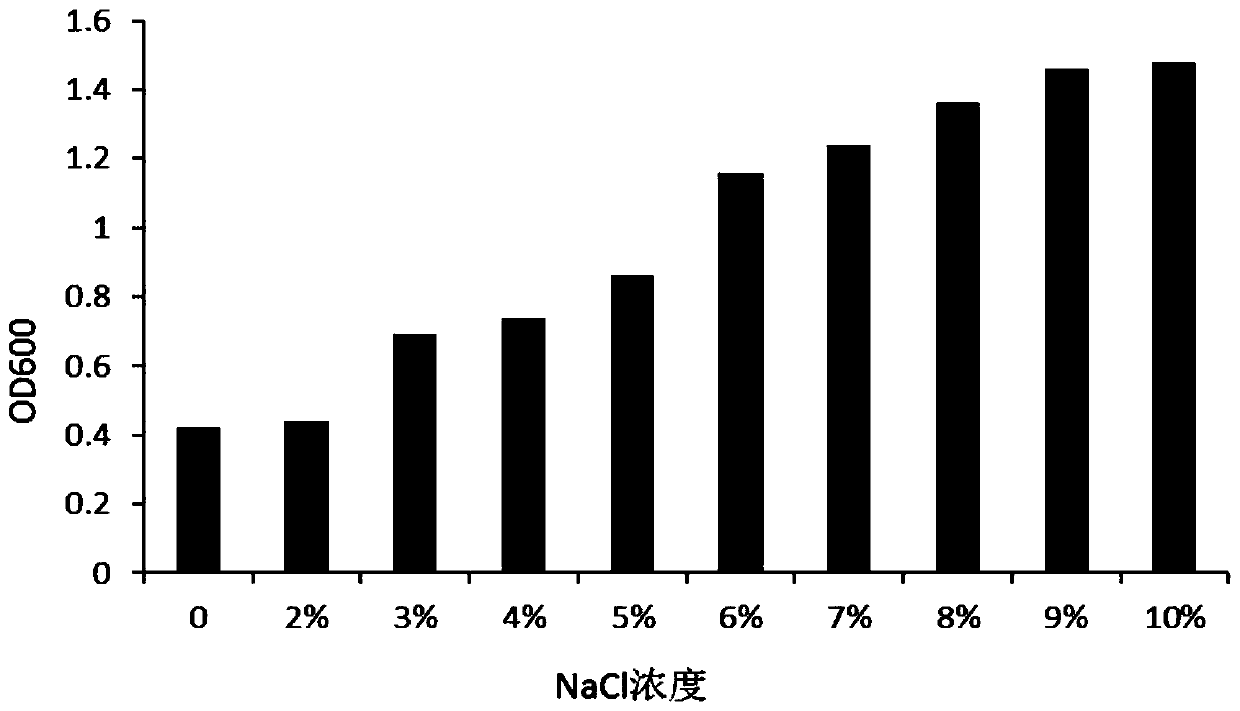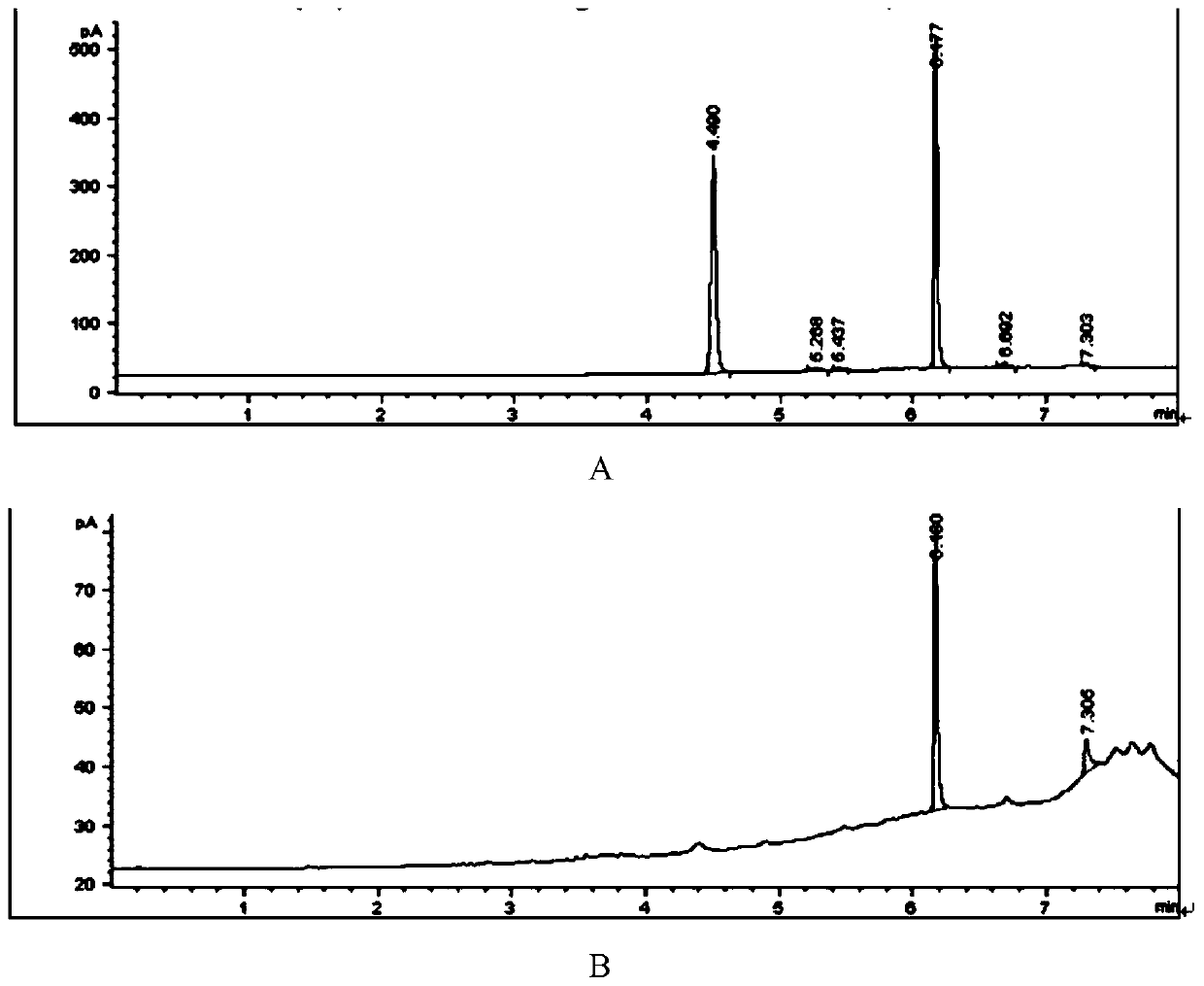Salt-tolerant bacillus subtilis for producing acetoin and application of salt-tolerant bacillus subtilis
A technology of Bacillus subtilis and acetoin, which is applied in the field of microorganisms, can solve the problems of cumbersome operation, cumbersome operation process, low salt content in saline-alkali soil, etc., and achieves the effects of expanding the planting range, increasing the planting area, and improving the salt tolerance.
- Summary
- Abstract
- Description
- Claims
- Application Information
AI Technical Summary
Problems solved by technology
Method used
Image
Examples
Embodiment 1
[0025] Example 1 Isolation and screening of strain NRCB002
[0026] Take 10g of rice rhizosphere soil and put it in an Erlenmeyer flask containing 90mL salt solution, shake for 1h at 28℃, 200r / min, and make 10 -1 Soil suspension, take 10 -1 10mL of the soil suspension, put it into a bottle containing 90mL salt solution, make 10 -2 Diluent, and so on. Make 10 separately -3 , 10 -4 , 10 -5 Diluent. Then use a pipette to remove 10 -3 , 10 -4 , 10 -5 100μL of the diluted solution was spread on the nitrogen-fixing solid medium, and each gradient was repeated in three times. Cultivate for 2 to 4 days in a constant temperature biochemical incubator at 28°C. Observe its growth every day. If single bacteria are lagging behind, use an inoculation loop to pick larger colonies on the BMS medium for purification and purify for 5 to 5 days. After 6 generations, store it at -80°C with 30% glycerol for later use.
Embodiment 2
[0027] Example 2 Identification of strain NRCB002
[0028] See the appearance of the strain figure 1 .
[0029] 16S rDNA identification through 16S rDNA sequence analysis, after BLAST alignment in NCBI, it has a higher homology with Bacillus subtilis, and the similarity is 100%. Based on its appearance and physiological and biochemical characteristics, the strain NRCB002 is preliminarily identified as Bacillus subtilis.
[0030] Physiological and biochemical properties are shown in Table 1: Starch hydrolysis, V-P reaction, gelatin liquefaction, glucose acid production, lysozyme, and methyl red tests are all positive.
[0031] Table 1 Physiological and biochemical properties of strain NRCB002
[0032] Strain number
Embodiment 3
[0033] Example 3 Analysis of salt tolerance of Bacillus subtilis NRCB002
[0034] The isolated and purified salt-tolerant strain Bacillus subtilis NRCB002 suspension was transferred to the same amount of liquid medium with different salt concentration, 25~30℃, 150~200r / min shaker culture, and the growth was observed. Measure the bacterial concentration (OD600) within 1d to determine the salt tolerance of the bacteria. See the salt tolerance of the strain figure 2 . It can be seen from the figure that as the concentration of NaCl increases, the strain NRCB002OD600 gradually increases, which can infer that the strain NRCB002 is a halophilic bacteria.
PUM
| Property | Measurement | Unit |
|---|---|---|
| salt tolerance | aaaaa | aaaaa |
Abstract
Description
Claims
Application Information
 Login to View More
Login to View More - R&D
- Intellectual Property
- Life Sciences
- Materials
- Tech Scout
- Unparalleled Data Quality
- Higher Quality Content
- 60% Fewer Hallucinations
Browse by: Latest US Patents, China's latest patents, Technical Efficacy Thesaurus, Application Domain, Technology Topic, Popular Technical Reports.
© 2025 PatSnap. All rights reserved.Legal|Privacy policy|Modern Slavery Act Transparency Statement|Sitemap|About US| Contact US: help@patsnap.com



